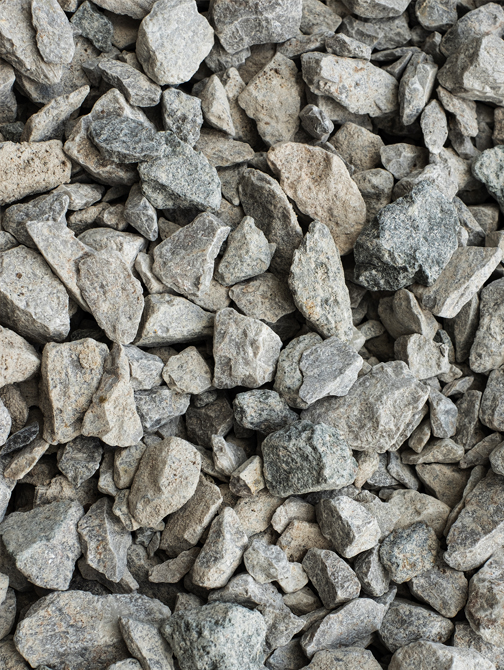Types of Ballast:
BENEFITS
Basalt is another high-performance aggregate ideal for demanding rail applications. Known for its density and hardness, basalt ballast performs exceptionally well in environments that require high thermal resistance and mechanical strength. It is especially suitable for tracks exposed to extreme weather and heavy axle loads.
FEATURES
Basalt ballast provided by ALFA exhibits a consistent particle shape and size, enhancing mechanical interlock and reducing maintenance cycles. It supports optimal track elasticity, helping to absorb vibrations and reduce structural stress. Its natural durability ensures reliable performance over extended operational periods.
BENEFITS
Granite is one of the most commonly used materials for railway ballast due to its high compressive strength and abrasion resistance. Its robust nature allows it to withstand dynamic loads and weathering, ensuring long service life under heavy train traffic. The interlocking structure of angular granite particles improves track stability and minimizes settlement over time, making it a preferred choice for mainline and high-speed rail projects.
FEATURES
Our granite ballast features uniform grading and sharp edges, essential for effective load transfer and resistance to movement. It offers excellent drainage capacity, reducing the risk of water accumulation and frost heave. Additionally, its resistance to chemical degradation ensures long-term performance in varying climatic conditions.
Applications of Railway Ballast
Railway ballast is essential for track construction, maintenance, and rehabilitation across freight, passenger, metro, and high-speed rail systems. It ensures proper alignment, distributes loads, and facilitates effective drainage. ALFA delivers high-quality ballast materials that meet national railway authority requirements and engineering standards, supporting the long-term stability and safety of rail infrastructure worldwide.
- Ceramics Products
- Ceramics Products
- Ceramics Products
- Ceramics Products

